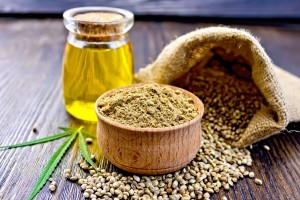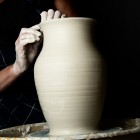In the Spotlight
Hemp: A fascinating, but confusing, plant
March, 2016

If the word hemp makes you think of papers and rolling rather than salads and sprinkling, you might be mixing it up with its relative, the herb cannabis, a.k.a. marijuana. While both are part of the cannabis family, hemp is grown as industrial cannabis, a tall and fast-growing plant used to create a variety of industrial and food products around the world. Here’s a look at the fascinating, but sometimes confusing, plant.
History
Cultivated in Central Asia for thousands of years, hemp was initially used as a food grain and later to make clothes, shoes, ropes and an early form of paper. Countries around the world have taken on and then banned the production of hemp over the centuries due to its relationship to its distant cousin, cannabis. Today, dozens of nations cultivate the fast-growing annual for industrial applications—sail canvas, clothing fabric, food, oil, mulch and bedding for animals. France is the top producer of hemp, accounting for 70% of the world’s output.
Canada’s Relationship with Hemp
Industrial hemp has a long history in -Canada—it was one of the first crops planted in Acadia and Quebec in the 1600s and was even distributed free to Canadian farmers in the 1800s as hemp seed. Hemp seed also came along with Eastern European immigrants to the Canadian prairies and was used for fresh oil, baking and traditional dishes. Chinese Canadians have likewise long used hemp for food and medical purposes, as it is purported to have properties that can aid atherosclerosis and autoimmune disorders. Outlawed about 80 years ago in the United States and Canada, hemp cultivation was allowed again in 1998. Today, the cultivation area for hemp on the Canadian prairies is stable, at about 90,000 acres, and it continues to be grown across the country.
Uses
Hemp is commonly used for clothing and furnishings, blended about half and half with other organic fibres, such as flax, cotton or silk. The inner, more woody fibres of hemp are used in other industrial applications—mulch, animal litter, etc., while the oil from hemp seeds is used in oil-based paints, in creams as a moisturizer, in cooking oils and in plastics. Modern industry also uses hemp in construction, health food and biofuel.
Food
You’ve likely seen hemp hearts or hemp seeds in the organic/health food section of your grocery store. But have you ever considered hemp ice cream, hemp tofu, frozen hemp waffles or hemp protein powder? How about a seasoning mix made with hemp seed or a hemp beer, which uses the plant blossoms? The fresh leaves of the hemp plant can be used in salads, while the seeds are often eaten raw, ground into a meal, sprouted or made into hemp milk and juice (as tea). About one third of the mass of hemp seeds can be extracted as hempseed oil, rich in unsaturated fatty acids.
Grow Your Own?
In order to grow hemp or manufacture hemp products, you must have a license from Health Canada and use only certified seed. Harvesting the tall, woody stalks can also be cumbersome—which is why it’s often left to mass-scale producers and farmers. t8n
Fun Facts
Hemp seeds are a high source of protein and are rich in magnesium, zinc, iron and fibre. About 73% of the energy in hemp seeds is in the form of fats and essential fatty acids.
A mixture of fibreglass, hemp fibre and flax is used to make composite panels for vehicles—some cars contain up to 20 kg of hemp in their manufacturing.
Because of its height, rapid growth and dense foliage, hemp is used extensively to kill weeds in agriculture.
Did You Know?
Cannabis is a diverse plant species with over 500 varieties. Unlike its relative marijuana, which has much higher levels of THC (tetrahydrocannabinol—the psychoactive ingredient in marijuana), hemp is defined by regulation as having less than 0.3% THC.













